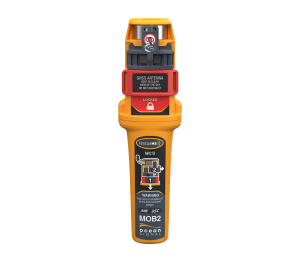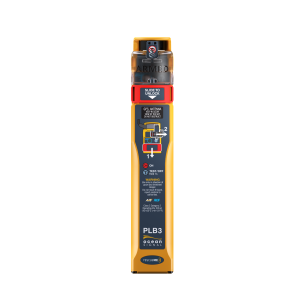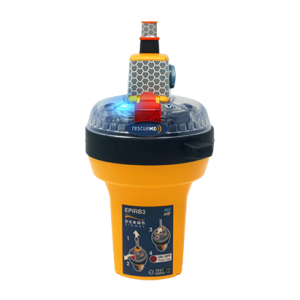
Blog
Top 10 Safe Boating Tips

Navigating safety on the water is crucial, especially for leisure boaters who might encounter unexpected emergencies. This FAQ guide will help you understand the differences between AIS Man Overboard Beacons (MOB), Personal Locator Beacons (PLB), and Emergency Position Indicating Radio Beacons (EPIRBs), and how these boating emergency essentials can be used to enhance safety during your next adventure.

AIS MOB beacons are devices designed to alert nearby vessels if someone falls overboard. They integrate with the boats Class A, Class B, or Receive Only Automatic Identification System (AIS), a tracking system used on ships and by vessel traffic services.
Function: Transmits the individual’s location and an emergency signal to nearby AIS-equipped vessels.
Range: Typically 1-2 miles.
Activation: Can be automatic (activated when an inflatable lifejacket inflates) or manual.
Usage: Ideal for coastal boating, sail racing, or any situation where nearby vessels can provide immediate assistance.
Key Benefit: Quick local response in a man overboard situation.
Usage Tip: Boaters using this product need to keep the product up and out of the water. Best if used mounted on a lifejacket.

Personal Locator Beacons are versatile emergency devices that send a distress signal to global search and rescue satellites when activated.
Function: Transmits a digital SOS distress signal on 406 MHz frequencies with location information to global Search and Rescue satellite systems for a minimum of 24 hours continuously.
Range: Global coverage.
Activation: Manual 3 step process to activate (PLB1) or Semi-Automatic upon life jacket inflation (PLB3).
Usage: Suitable for both land and marine environments, providing a safety net for a variety of outdoor activities.
Key Benefit: Versatility and global reach for various emergency scenarios.
Use a Personal Locator Beacon if you:
Usage Tip: Boaters using this product need to keep the product up and out of the water. Best if used mounted on a lifejacket. PLBs are ideal for leisure boaters in remote areas or those who need a single device for multiple outdoor adventures.

EPIRBs are robust emergency devices designed for maritime use, providing vessel-wide distress signaling in severe conditions.
Function: Transmits a digital SOS distress signal on 406 MHz frequencies with location information to global Search and Rescue satellite systems for a minimum of 48 hours continuously. Learn More
Range: Global coverage.
Activation: Can be automatic (upon water immersion when out of bracket) or manual.
Usage: Primarily used for vessel safety in offshore conditions.
Key Benefit: Reliable and prolonged signaling for vessel emergencies.
EPIRBs are crucial for:
Usage Tip: Boaters using this product should tether the beacon to their life raft or lifejacket but allow the EPIRB to float in the water while transmitting.
Consider the following factors to choose the right beacon:
Match your boating emergency gear to your boating environment and needs to ensure the best safety coverage.
Here is the good news: Now you don’t need to choose between multiple devices. Ocean Signal now has the new PLB3 AIS Personal Locator Beacon which provides the same functionality as an AIS MOB and a PLB. Also, if you prefer an EPIRB but want the AIS functionality, check out the new EPIRB3 Pro or EPIRB3 with AIS Alerting.
While each device serves a distinct purpose, their use cases can overlap depending on the scenario:
AIS MOB beacons are best for man overboard situations in busy waters.
PLBs offer broad utility for personal safety across different terrains and activities.
EPIRBs are dedicated to severe maritime distress, providing long-range emergency signaling for vessels.
Tip: It’s often beneficial to carry more than one type of device to cover different emergency situations.
The requirement for these boating emergency essentials varies by region and type of boating activity. While not always mandatory, carrying these devices significantly increases safety and can be a lifesaver in emergencies. Just ask these survivors!
Advice: Check local regulations and consider carrying these devices regardless of mandates, especially for offshore or remote boating.
Once you have purchased a beacon:
Final Tip: Regularly update your registration details and practice using the Boating Emergency Essentials to stay prepared for any emergency.
For more detailed information or further questions about these safety devices, feel free to reach out. Safe and happy boating!